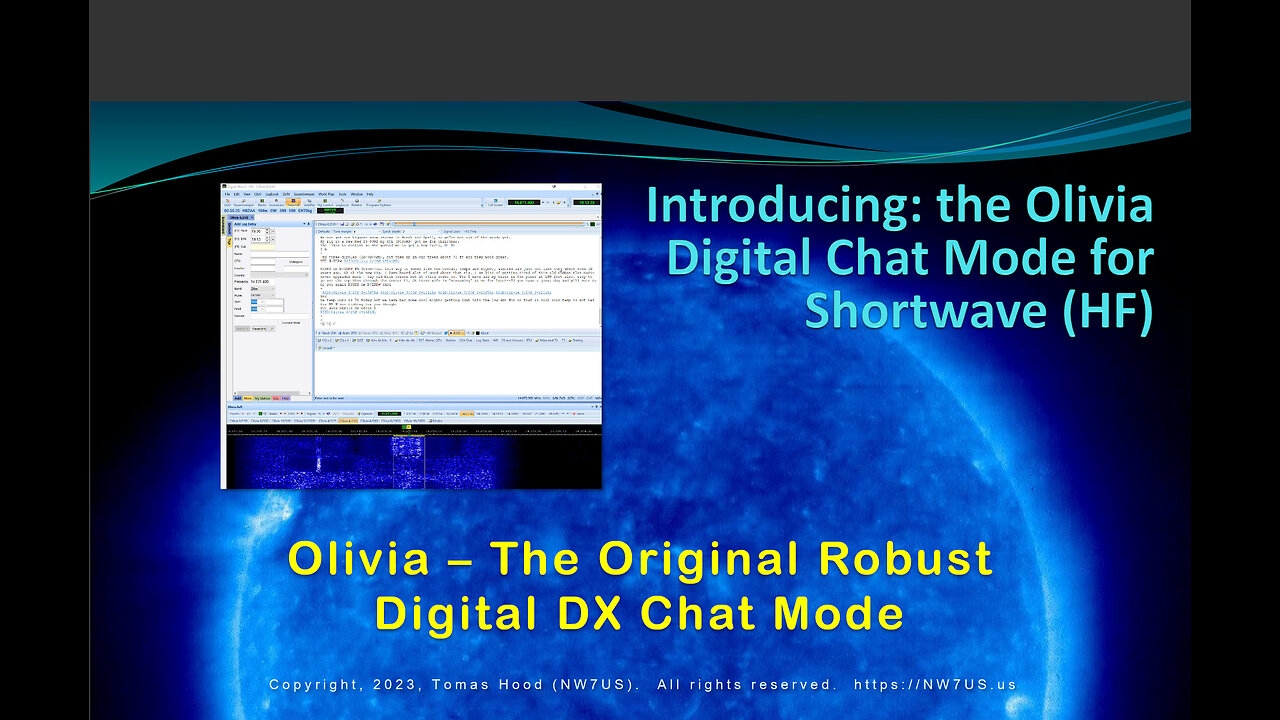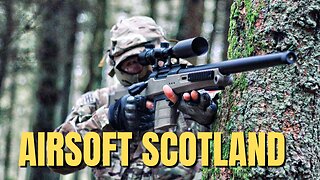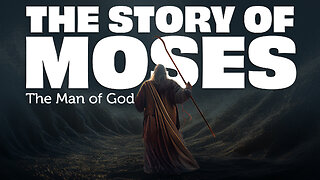Premium Only Content

Introduction to the Olivia Digital Communications Mode (HF, Amateur Radio)
Olivia is the digital communications mode on shortwave (high frequency sub band, or, HF) for amateur radio operators who want more than the "Check Propagation" FT8 mode. This video is an introduction that was presented to the Raleigh Amateur Radio Society ( https://www.rars.org/ ) on December 12, 2023. Presented by Tomas Hood, NW7US
Olivia information can be found, here:
https://OliviaDigitalMode.org
Olivia, a Multi-Frequency Shift Keying (MFSK) radioteletype digital mode, is an amateur radioteletype protocol designed to work in difficult (low signal-to-noise ratio plus multipath) propagation conditions on shortwave radio (i.e., high-frequency, or HF) bands. The typical Olivia signal is decoded when the amplitude of the noise is over ten times that of the digital signal! It is commonly used by amateur radio operators to reliably transmit ASCII characters over noisy channels (slices of high-frequency spectrum -- i.e., frequencies from 3 MHz to 30 MHz; HF) exhibiting significant fading and propagation phasing.
The Olivia digital modes are commonly referred to by the number of tones and the bandwidth used (in Hz). Therefore, it is common to express the Olivia digital mode as Olivia X/Y (or, alternatively, Olivia Y/X ), where X refers to the number of different audio tones transmitted, and Y refers to the bandwidth in Hertz over which these signals are spread. Examples of common Olivia modes are, 8/250 (meaning, 8 tones/250-Hertz bandwidth), 16/500, and, 32/1000.
The protocol was developed at the end of 2003 by Pawel Jalocha. The first on-the-air tests were performed by two radio amateurs, Fred OH/DK4ZC and Les VK2DSG, on the Europe-Australia propagation path in the 20-meter shortwave radio amateur band. The tests proved that the Olivia protocol (or, digital mode) works well and can allow regular intercontinental radio contacts with as little as one-watt RF power (when propagation is highly-favorable). Since 2005, Olivia has become a standard for digital data transfer under white noise, fading and multipath, flutter (polar path) and auroral conditions.
Olivia can perform nearly as good as the very popular WSJT mode, FT8, and better than FT4.
See you on the waterfall!
-
 4:38
4:38
Amateur Ham Radio Shortwave (LF, MF, HF, VHF, UHF, SHF) Communications + Space Weather
6 months agoVoice of Korea International Shortwave Broadcast Station, August 8, 2024
355 -
 LIVE
LIVE
Tactical Advisor
48 minutes agoThe Vault Room Podcast 009 | Everyone Getting $5000?!
511 watching -
 LIVE
LIVE
Major League Fishing
2 days agoLIVE Tackle Warehouse Invitationals, Stop 1, Day 2
442 watching -
 28:42
28:42
CatfishedOnline
22 hours agoWoman Insists Morgan Wallen Relationship Isn't a Romance Scam!
1.09K -
 16:25
16:25
TSPLY
21 hours agoNew CNN / MSNBC Meltdown Moments Of Getting Mad At Donald Trump In February
3.09K4 -
 8:33
8:33
scoutthedoggie
2 hours agoAirsoft War Games Scotland
1.38K1 -
 4:56
4:56
Kirill MultitoolOfficial
1 day ago $0.09 earnedSurvival TIPS and usefull bushcraft DIY in the wild
1.56K2 -
 27:25
27:25
ArturRehi
1 day agoThis is How Dictatorships are Formed
845 -
 59:35
59:35
AlaskanBallistics
14 hours ago $0.13 earnedI Love this Gun Episode # 11
1.01K -
 1:21:01
1:21:01
BibleUnbound
17 hours agoThe Complete Story of Moses: The Man of God
2.99K1